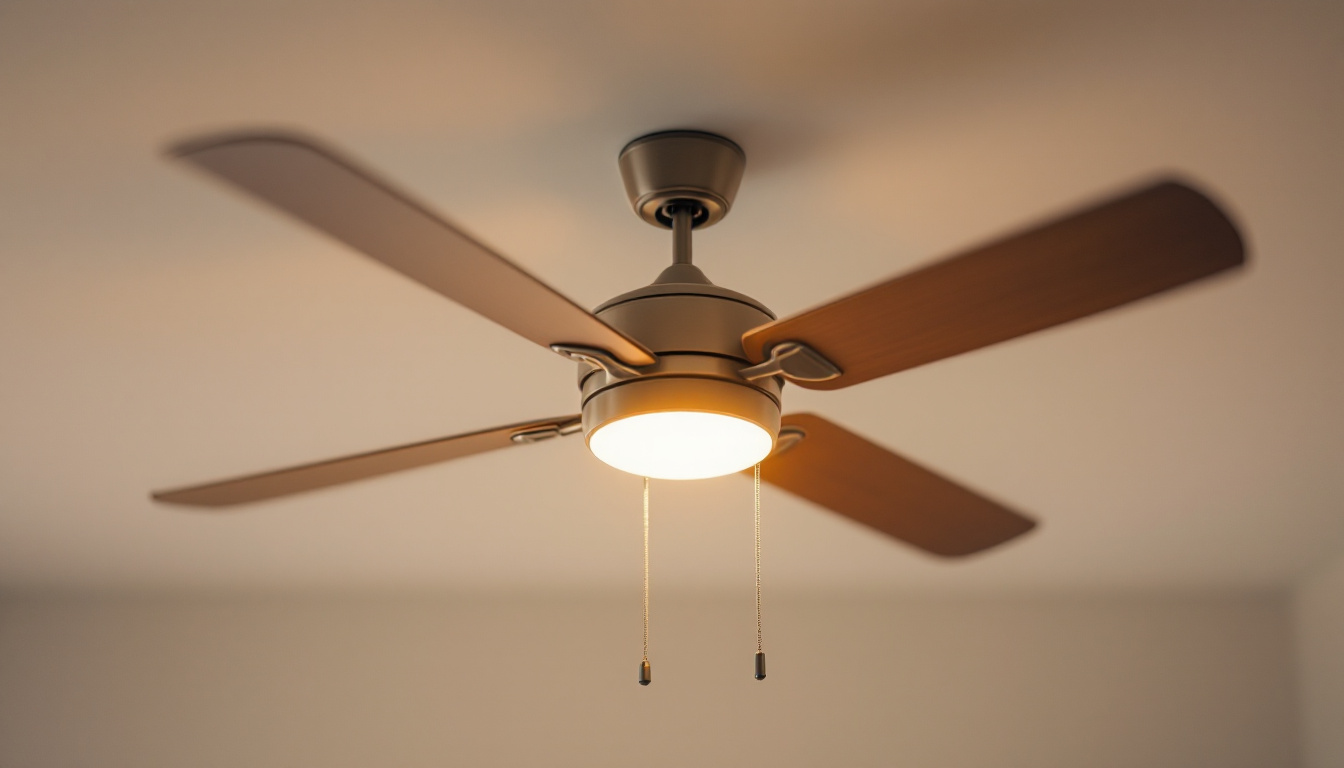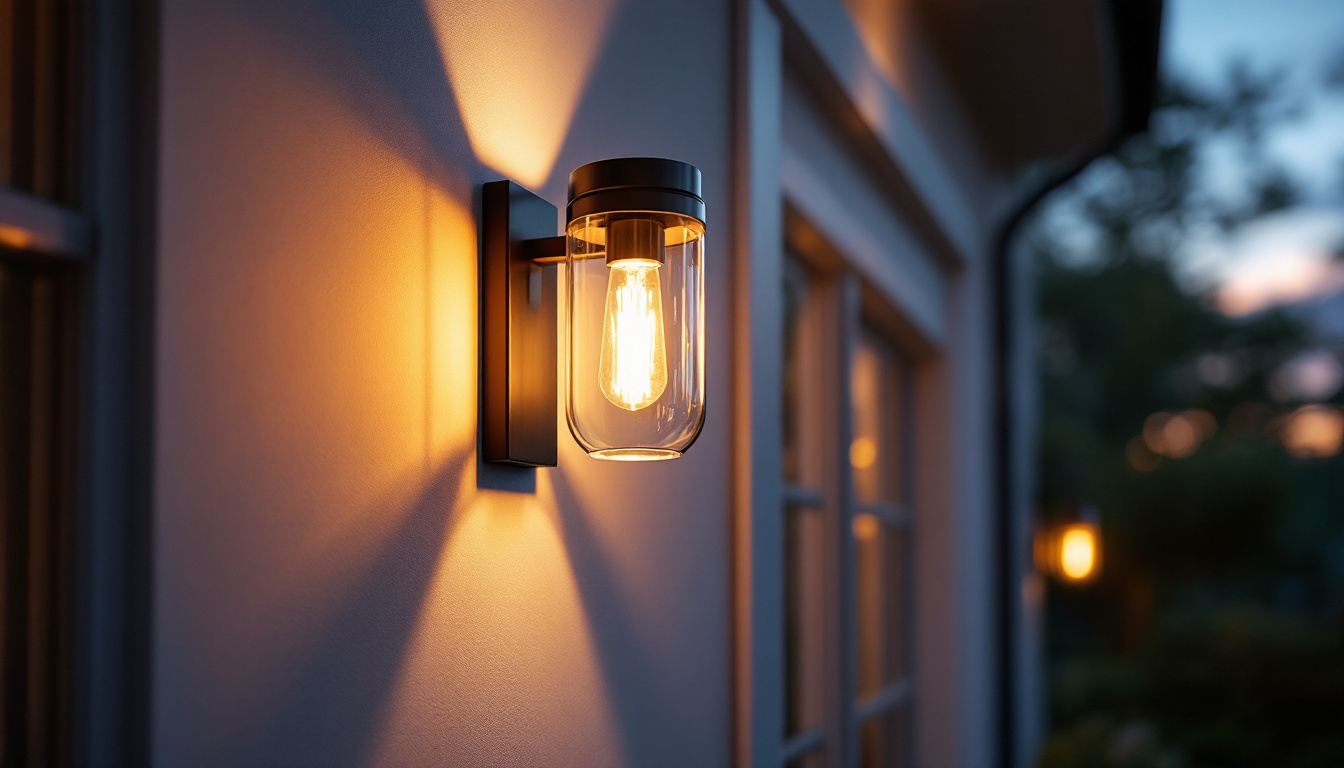
As lighting contractors, understanding the intricate components of ceiling fans is essential for effective installation and maintenance. A well-informed contractor can enhance customer satisfaction and ensure safety and efficiency in every project. This article will provide a comprehensive overview of ceiling fan parts, including a detailed diagram and key tips to help lighting contractors excel in their work.
Ceiling fans are not just decorative fixtures; they consist of several key components that work together to provide airflow and lighting. Familiarity with these parts can significantly improve a contractor’s ability to troubleshoot issues and perform installations efficiently.
The motor assembly is the heart of the ceiling fan. It powers the blades and is responsible for the fan’s rotation. Typically, ceiling fans use either an AC or DC motor, with each type offering distinct benefits. AC motors are common due to their reliability and lower cost, while DC motors are becoming increasingly popular for their energy efficiency and quieter operation.
When selecting a fan, consider the motor’s wattage and speed settings, as these factors will impact the fan’s performance. A powerful motor can move air more effectively, making it crucial for larger spaces. Additionally, many modern ceiling fans come equipped with smart technology, allowing users to control their fan settings via smartphone apps or voice commands, adding a layer of convenience and customization.
Ceiling fan blades come in various materials, shapes, and sizes, each influencing airflow and aesthetics. Wooden blades provide a classic look but may require more maintenance, while plastic blades are lightweight and often more durable. The pitch of the blades also plays a critical role in airflow; a steeper pitch can move more air, enhancing the fan’s efficiency.
When installing a fan, ensure the blades are properly balanced. An unbalanced fan can create noise and vibration, leading to premature wear and tear. It is advisable to use a blade balancing kit to achieve optimal performance. Furthermore, the design of the blades can also affect the overall style of the room; for instance, sleek, modern blades can complement contemporary decor, while ornate blades may suit a more traditional setting, allowing homeowners to express their personal style through their choice of ceiling fan.
Many ceiling fans come with an integrated light kit, providing dual functionality. Understanding the components of the light kit, such as the bulb type, wattage, and fixture design, is vital for contractors. LED bulbs are increasingly popular due to their longevity and energy efficiency, making them a preferred choice for modern installations.
When installing a light kit, ensure that the wiring is compatible with the fan’s motor and that the total wattage does not exceed the fan’s rating. This will prevent overheating and potential electrical hazards. Additionally, consider the placement of the light kit; the height and angle can significantly influence the distribution of light in the room. For instance, a downward-facing light kit can create a warm, inviting atmosphere, while an upward-facing option can enhance ambient lighting, making it essential to choose the right configuration based on the room’s purpose and design.
Proper wiring is crucial for the safe and effective operation of ceiling fans. Lighting contractors must be well-versed in electrical codes and best practices to ensure compliance and safety. In addition to understanding the basic wiring principles, contractors should also stay updated on any changes to local electrical codes, as these can vary significantly from one jurisdiction to another. Regular training and certification can help ensure that contractors are knowledgeable about the latest safety standards and installation techniques.
Ceiling fans typically have three main wires: the hot wire, the neutral wire, and the ground wire. The hot wire supplies power to the fan, while the neutral wire returns the current back to the electrical panel. The ground wire is essential for safety, providing a path for electrical current in case of a fault. It is also important to note that some ceiling fans may have additional wires for features like lights or speed controls, which can complicate the wiring process. Therefore, a thorough understanding of the fan’s specifications is essential before beginning installation.
When connecting the fan, it is vital to follow the manufacturer’s wiring diagram closely. This will ensure that the fan operates correctly and safely. Additionally, using wire nuts to secure connections can prevent loose wires, which are a common cause of electrical failures. For added safety, it is advisable to use electrical tape to wrap the wire nuts and connections, providing an extra layer of protection against accidental disconnections. Furthermore, always turn off the power at the circuit breaker before starting any electrical work to avoid the risk of electric shock.
With the rise of smart home technology, many ceiling fans now come equipped with remote controls or smart capabilities. Understanding how to install and configure these systems is increasingly important for lighting contractors. Many modern fans can be controlled via smartphone apps, allowing users to adjust settings such as speed, direction, and lighting from anywhere in their home. This convenience not only enhances user experience but also promotes energy efficiency by enabling homeowners to manage their ceiling fans more effectively.
Remote controls typically require a separate receiver that connects to the fan’s wiring. Ensure that the receiver is compatible with the fan model and that all connections are secure. For smart fans, follow the manufacturer’s instructions for connecting to Wi-Fi and integrating with home automation systems. Additionally, contractors should be prepared to troubleshoot common issues, such as connectivity problems or interference with other wireless devices. Educating clients on how to use these smart features can also enhance their satisfaction and ensure they get the most out of their investment in modern ceiling fan technology.
Successful ceiling fan installation requires attention to detail and adherence to best practices. Lighting contractors should be equipped with the right tools and knowledge to ensure a seamless installation process.
The location of the ceiling fan is crucial for optimal performance. Ideally, fans should be installed in the center of a room, at least 7 to 9 feet above the floor. This height ensures maximum airflow while minimizing the risk of accidents.
Additionally, consider the room’s layout and the presence of obstacles such as beams or light fixtures. A fan installed too close to walls or furniture may not operate effectively, reducing airflow and creating noise.
The mounting bracket is a critical component that supports the entire weight of the fan. It must be securely fastened to a ceiling joist or a suitable support structure. Using a mounting bracket rated for the fan’s weight will ensure stability and safety.
Before securing the bracket, check for any electrical wiring in the ceiling to avoid damaging existing connections. Once the bracket is in place, double-check its level to ensure the fan hangs straight.
Regular maintenance is essential for prolonging the lifespan of ceiling fans and ensuring optimal performance. Lighting contractors should advise clients on proper care and troubleshooting techniques.
Dust and debris can accumulate on ceiling fan blades, impacting airflow and efficiency. Regular cleaning is necessary to maintain performance. Use a soft cloth or a duster to wipe down the blades, and consider using a blade cleaner for tougher grime.
Additionally, check for any loose screws or connections during maintenance visits. Tightening these components can prevent noise and vibration, enhancing the fan’s operation.
Even with proper installation and maintenance, ceiling fans can experience issues. Common problems include wobbling, noise, and failure to operate. For wobbling fans, check for balanced blades and secure connections. If noise persists, inspect the motor and bearings for wear.
If the fan does not operate, verify that the power supply is functioning and that all wiring connections are secure. In some cases, replacing the motor or other components may be necessary to restore functionality.
Safety is paramount when working with electrical systems. Lighting contractors must adhere to safety protocols to protect themselves and their clients during installation and maintenance.
Wearing appropriate PPE is essential when working with ceiling fans. Hard hats, safety glasses, and gloves can protect contractors from potential hazards. Additionally, using insulated tools can reduce the risk of electrical shock.
Before starting any installation, ensure the power is turned off at the circuit breaker. This precaution will help prevent accidents and ensure a safe working environment.
Each region may have specific electrical codes and regulations governing ceiling fan installations. Familiarity with these codes is vital for compliance and safety. Lighting contractors should stay updated on local regulations to avoid fines and ensure that installations meet safety standards.
Consulting with local building authorities or electrical inspectors can provide valuable insights into compliance requirements and best practices for ceiling fan installations.
Understanding the various components of ceiling fans, alongside proper installation and maintenance techniques, is crucial for lighting contractors. By familiarizing themselves with the parts diagram and adhering to best practices, contractors can enhance their service offerings and ensure customer satisfaction.
As the demand for ceiling fans continues to grow, staying informed about the latest technologies and trends will keep contractors competitive in the market. By prioritizing safety, efficiency, and customer education, lighting contractors can build a reputation for excellence in their field.
Ready to elevate your lighting projects with the highest quality ceiling fan parts? Look no further than LumenWholesale, where we offer an extensive selection of spec-grade lighting products at unbeatable wholesale prices. Say goodbye to local distributor markups and hello to superior lighting solutions that meet rigorous industry standards. With free shipping on bulk orders, you can stock up on reliable, high-performance lighting components and enjoy the best value without any hidden fees. Make your next installation a breeze with the perfect blend of quality, affordability, and convenience at LumenWholesale – Wholesale Lighting at the Best Value.

Discover essential tips and expert insights for lighting contractors on mastering light automatic sensors.

Discover why 2 ft LED lights are essential for any lighting project.

Discover innovative cost-saving strategies for lighting contractors with LED portable lights for freezers.

Discover the key factors that distinguish top lighting contractors in the installation of exterior sconce lights.